What do fans of the Ford Bronco and Jeep Wagoneer have in common? Patience. They had to wait decades for the newest versions of their beloved off-roaders. Land Cruiser fans in the U.S. also had to wait for a new iteration of it, but they only watched their calendars and various enthusiast forums for about three years after Toyota discontinued the 200 Series in 2021. The Land Cruiser returns to our streets and trails as an all-new 2024 model. Just like other reincarnated icons, it may keep the spirit of its ancestors alive, but it’s changed in major ways.
The Same, but Different
When the 200 Series was ready to ride off into the sunset, it was a massive people-mover with up to three rows of seats, a thirsty 5.7-liter V8, and a starting price of $85,515. Its direct successor, the 300 Series, is available in the states, but only in Lexus form as the LX 600. Toyota based the new Land Cruiser on the 250 Series sold in international markets and the TNGA-F platform that’s under the Tundra, Sequoia, and Tacoma. As that number implies, the newest Land Cruiser is smaller than its LX 600 corporate cousin – but only slightly. They both have the same 112.2-inch wheelbase and the Lexus is less than half an inch wider. The biggest difference between the two rigs is length, with the LX measuring approximately four inches longer. The Land Cruiser is the taller of the two by 1.5 to 3.2 inches, depending on the respective models chosen. In person, those figures do nothing to diminish the Land Cruiser’s presence. It’s a big, boxy machine that looks ready to go on an adventure.
The size delta between the LX and Land Cruiser is more noticeable on the inside. Lexus offers the LX 600 in 4-, 5-, or 7-passenger configurations; except for the base and Ultra Luxury models, the LX is a three-row SUV. The reborn Land Cruiser is purely a two-row.
Either way you go, you can’t get a new U.S.-market Land Cruiser – no matter which badge it wears – with a V8 anymore. The Lexus LX 600 gets a 3.4-liter twin-turbo V6 that generates 409 horsepower and 479 lb-ft of torque and routes its output through a 10-speed automatic and full-time four-wheel drive and either the F Sport Handling model’s Torsen limited-slip center differential or the locking center diff found in the rest of the range. Properly equipped, the LX can pull up to 8,000 pounds, one ton more than the Land Cruiser’s max.
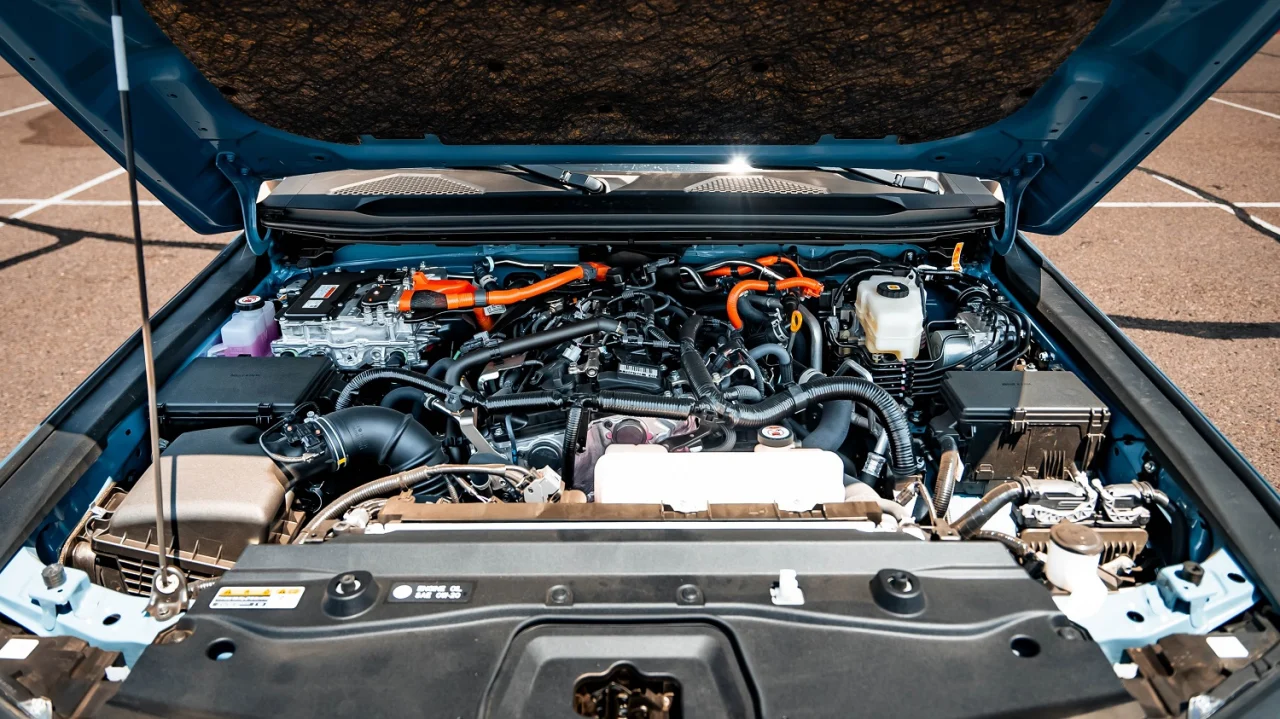
Toyota equipped the Land Cruiser with a turbocharged 2.4-liter I4 hybrid setup that includes a 1.87-kWh Nickel-Metal Hydride battery, an electric motor, an eight-speed automatic, and full-time four-wheel drive with a locking Torsen limited-slip center differential and a rear locker. Total output is 326 horsepower and 465 lb-ft of torque. When I put my right foot down, the power came on quickly and got the Land Cruiser out of its own way quickly. I never once lamented the absence of a V8 under the hood, especially when I looked at the potential fuel economy figures of 22 miles per gallon in the city, 25 on the highway, and 23 combined.
The LX’s advantages come at a premium. The 2024 model is even more expensive than its predecessor, starting at $93,915. The most basic Land Cruiser, aka the Land Cruiser 1958, has an MSRP of $55,950. The mid-range offering, known simply as Land Cruiser, goes for a minimum of $61,950 and comes standard with a Stabilizer Disconnect Mechanism for better front articulation and color-selectable Rigid Industries LED fog lights. The top-level First Edition has upgraded skid plates, rock rails, a roof rack, standard leather seats, and a price tag of at least $74,950.
Big, Blocky, and Blue
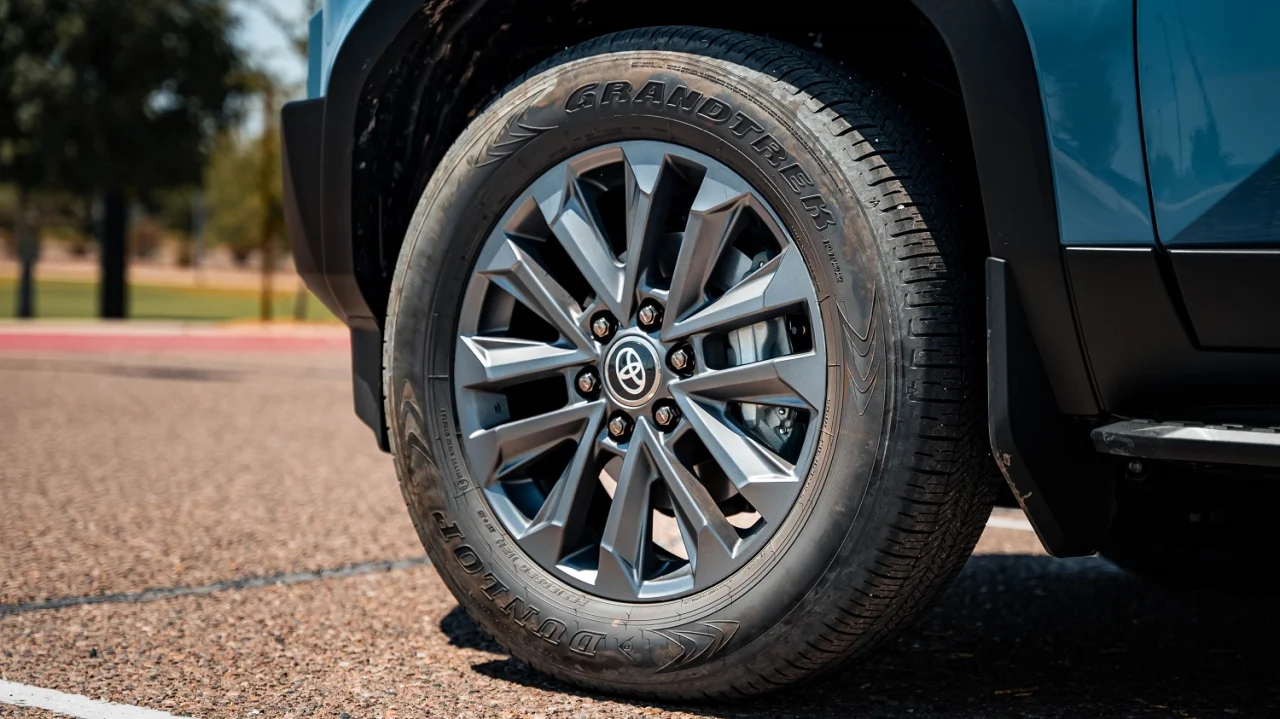
My colleagues and I recently had an opportunity to test out a Heritage Blue 2024 Land Cruiser for a week. Toyota was generous during the configuration process and checked the box for the Premium Package, which added features such as leather seats, a head-up display, a digital rearview mirror, a power moonroof, a 14-speaker JBL sound system, a cool box in the center console, and a wireless charging pad. Other options, including 20-inch wheels, a contrasting Grayscape roof, and a roof rack, pushed the as-tested price to $71,364.
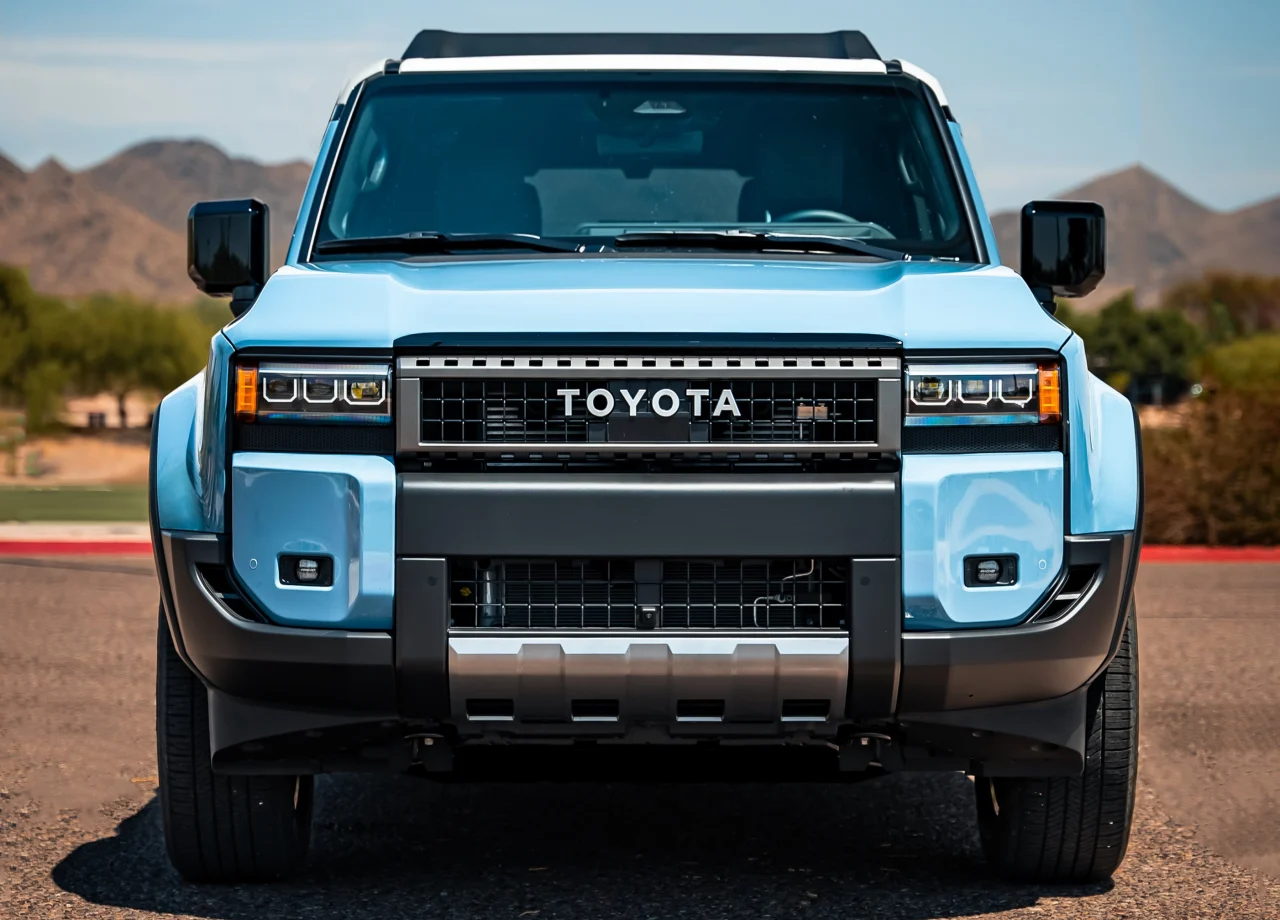
The Land Cruiser’s lower price and associated prestige compared to the 200 and 300 Series variants were not detriments to it. In fact, it had something that the other ones didn’t: a cool factor. In the past several years, I drove a 200 Series Land Cruiser for a week, tested two LX 570s on- and off-road, and did the same with a 2022 LX 600 Ultra Luxury. All of those were attractive vehicles with an assortment of hardware and tech features that made them capable of getting me over the trails I ventured onto. But none of them made me react to them the way the 2024 Land Cruiser did. Yes, its squared-off 8-bit looks are slightly juvenile, as if a team built a Tonka toy out of Lego blocks, but they had more personality than the other versions of the Land Cruiser I had driven before.
Adventures in Suburbia
My nearly hour-long drive home from the office in Scottsdale, Arizona required getting through rush-hour traffic and trying not to get clobbered on the highway by aggressive drivers who treat speed limits as mere suggestions. Even in such mundane settings with miles of concrete ahead of me, I felt as if I was on my way to a safari far away from can lights and chain restaurants. I was seated up high behind an upright windshield and felt sensations through the bottom of my seat that always seem to be transmitted by body-on-frame vehicles. I hadn’t even touched dirt with the Dunlop Grandtreks, but I already wanted a new Land Cruiser.
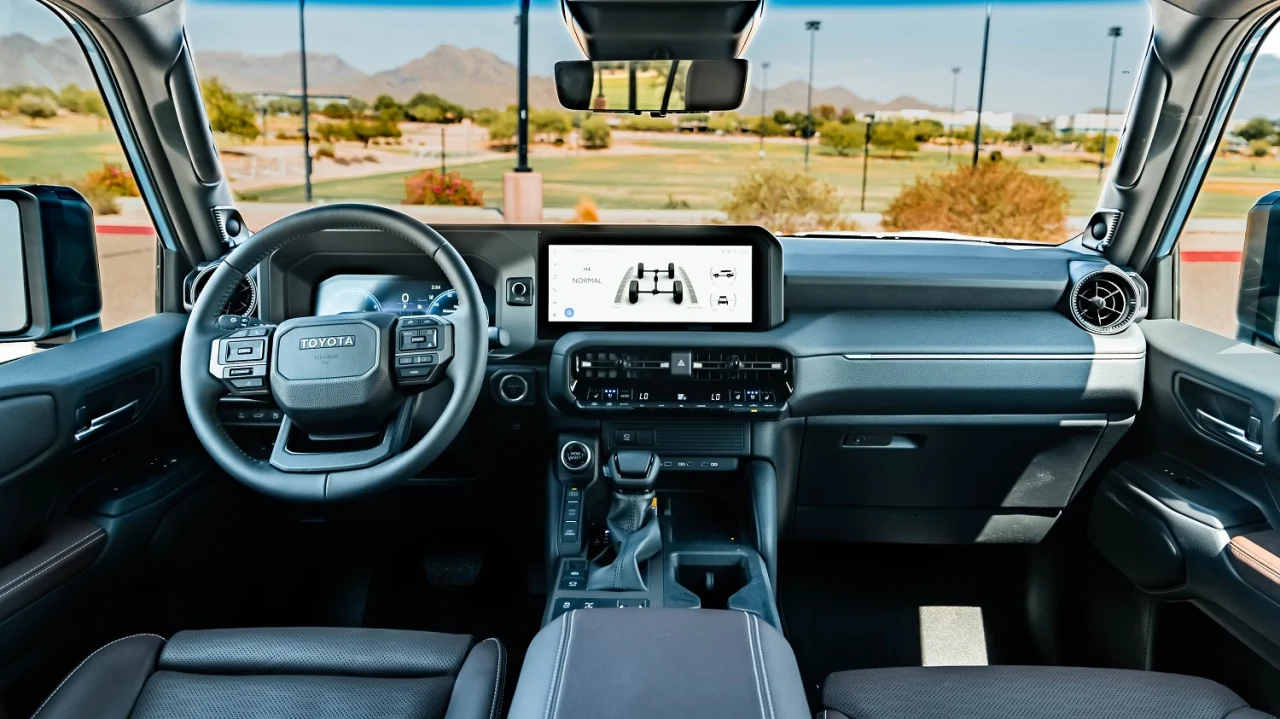
As my drive went on, that desire only grew stronger. Toyota combined all that implied ruggedness with a pleasant blend of comfort and modern convenience features. The independent front end helped me hold the road with confidence – and without minor steering corrections to keep the nose pointed straight over rough pavement. The digital gauges, head-up display, digital rearview mirror, and 12.3-inch infotainment touchscreen kept me informed about what I and the drivers near me were doing and where we were going in relation to each other. Toyota laid out the controls for major features, such as the heated and ventilated front seats and the HVAC system in a logical, easily accessible format.
The second row was comfortable in its own way. Although it didn’t slide forward or backward, it offered enough legroom for someone my height (5’10”) and access to controls for the third climate control zone. Both sections of the back seat could be manually folded and tumbled forward to free up additional cargo space.
As much as I liked being in the Land Cruiser, I did see some things that were either confusing or downright frustrating. Although Toyota used buttons for a variety of functions, the primary infotainment controls were on the touchscreen. There was a volume knob, but it was so far left that it was almost in the gauge area. The intense Arizona sun quickly made me realize that the driver’s sun visor needed to telescope more to provide better side coverage.
A Little Dirt Doesn’t Hurt
After I finally made it home, I loaded a couple of disposable water bottles into the cool box and headed out to the trails near my house. Luckily, they were already groomed for vehicle travel, but every now and then I came upon a stretch where I was grateful for the Land Cruiser’s slightly reduced length. Visibility was excellent thanks to my commanding seating position and the large windows. The extremities of the hood were also easy to keep an eye on.
Always being in H4 by default meant I was able to get over nearly everything out there with just careful throttle and brake application. A steep downhill section that led to a rocky dried-up creek bed called for extra caution and gave me a reason to use the Land Cruiser’s off-road hardware and technology. After flipping a switch to engage L4, I quickly familiarized myself with the command center for the various on- and off-road driving modes and aids. Pressing the MTS button brought up the menu for the Multi-Terrain Select system modes, which include Deep Snow, Mud, Sand, Dirt, and Auto for H4 and Rock, Mud, Sand, and Auto for L4. I selected Rock to prepare for what was coming, activated the Downhill Assist Control, then used the dial to reduce my descent speed to the minimum. Making my way across the span of rocks, I was more concerned about the wheels getting nicked than the Land Cruiser’s vulnerable mechanical parts because the eight inches of running clearance were plenty to keep them safe. Once I was past the creek bed, I found it easier to keep my foot from bouncing off of the gas pedal over the bumpier parts of the trail by using the Crawl Control function (aka off-road cruise control) at one of its higher speeds. I was lucky to come upon a rut formed by previous vehicles and recent rain, which was a perfect excuse to use the Stabilizer Disconnect Mechanism to max out the front end’s articulation. Further out, I put the Land Cruiser into its Mud setting and pointed the nose toward a semi-dry patch of mud. Once the tires broke through to the soft earth underneath, I felt a little bit of slipping and squirming, but I got out of it with ease – and some mud spray on the splash guards and running boards as a souvenir.
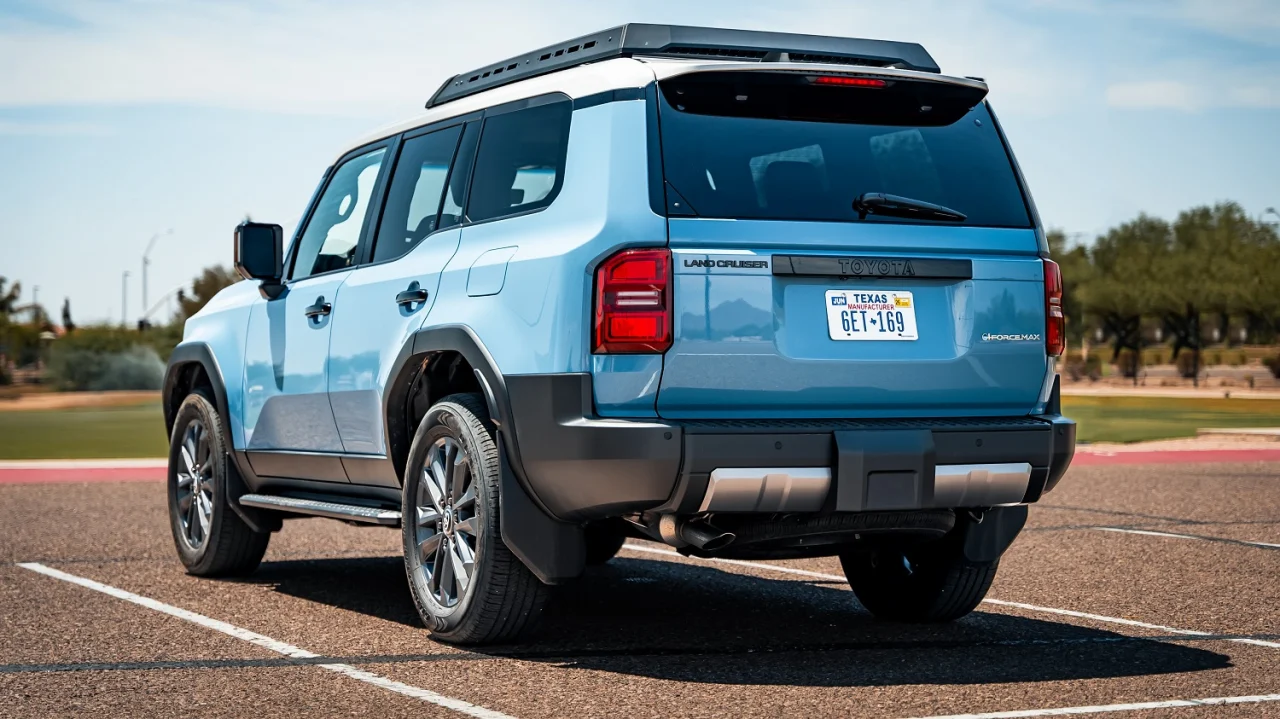
Yes, the Land Cruiser is not like it was before, but that means it can reach different buyers than previous versions. It certainly changed the way I look at the model now. As nice as media test vehicles usually are, only some of them leave me thinking, If I had the budget for a vehicle like this, I could totally see myself buying it. I’ve driven a few different modern versions of the Land Cruiser, but thanks to its handsome design, comfortable interior, off-road capabilities, and impressive power, the all-new 2024 model is the only one that ever wheeled its way into that category.
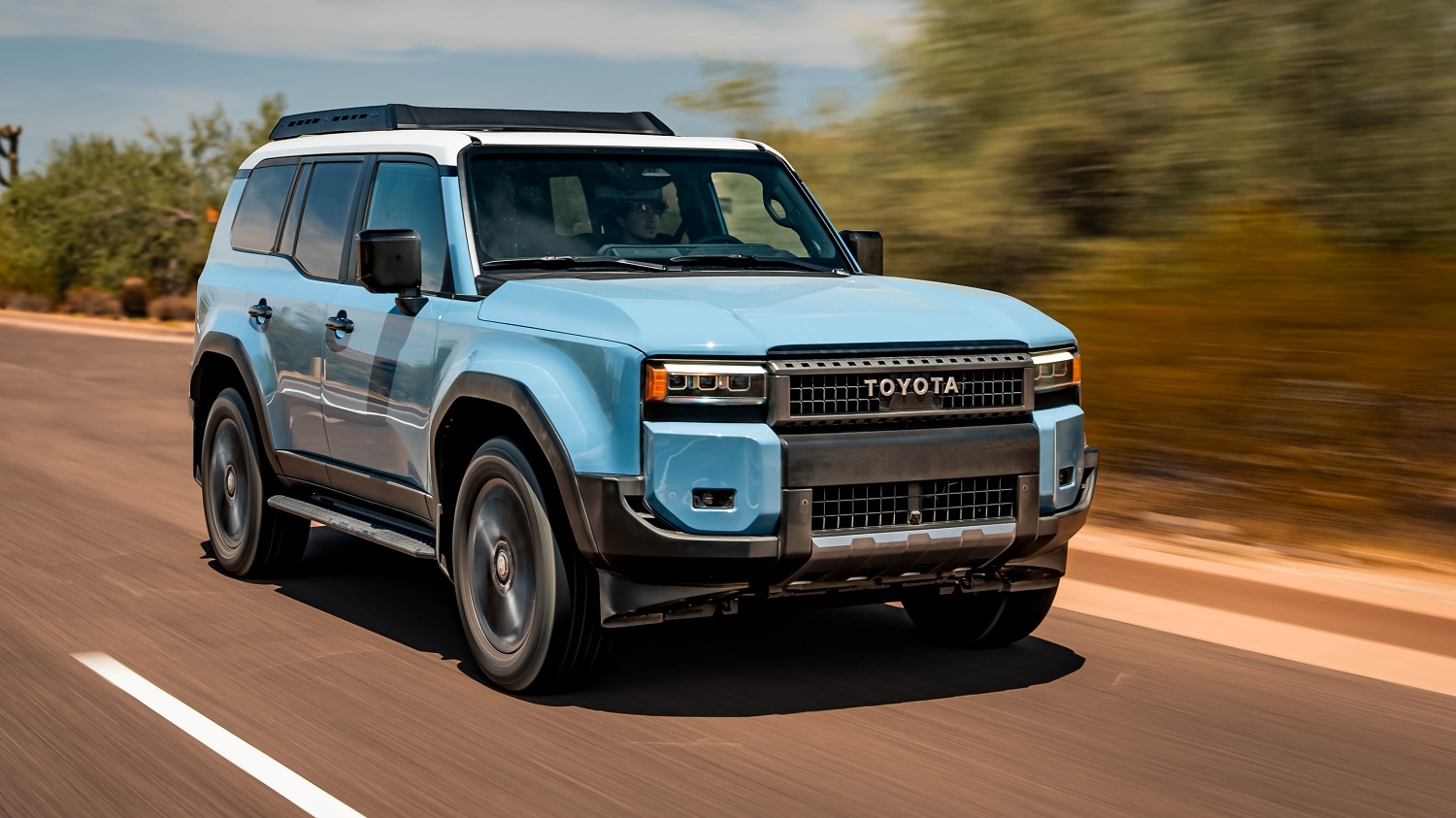
Comments are closed